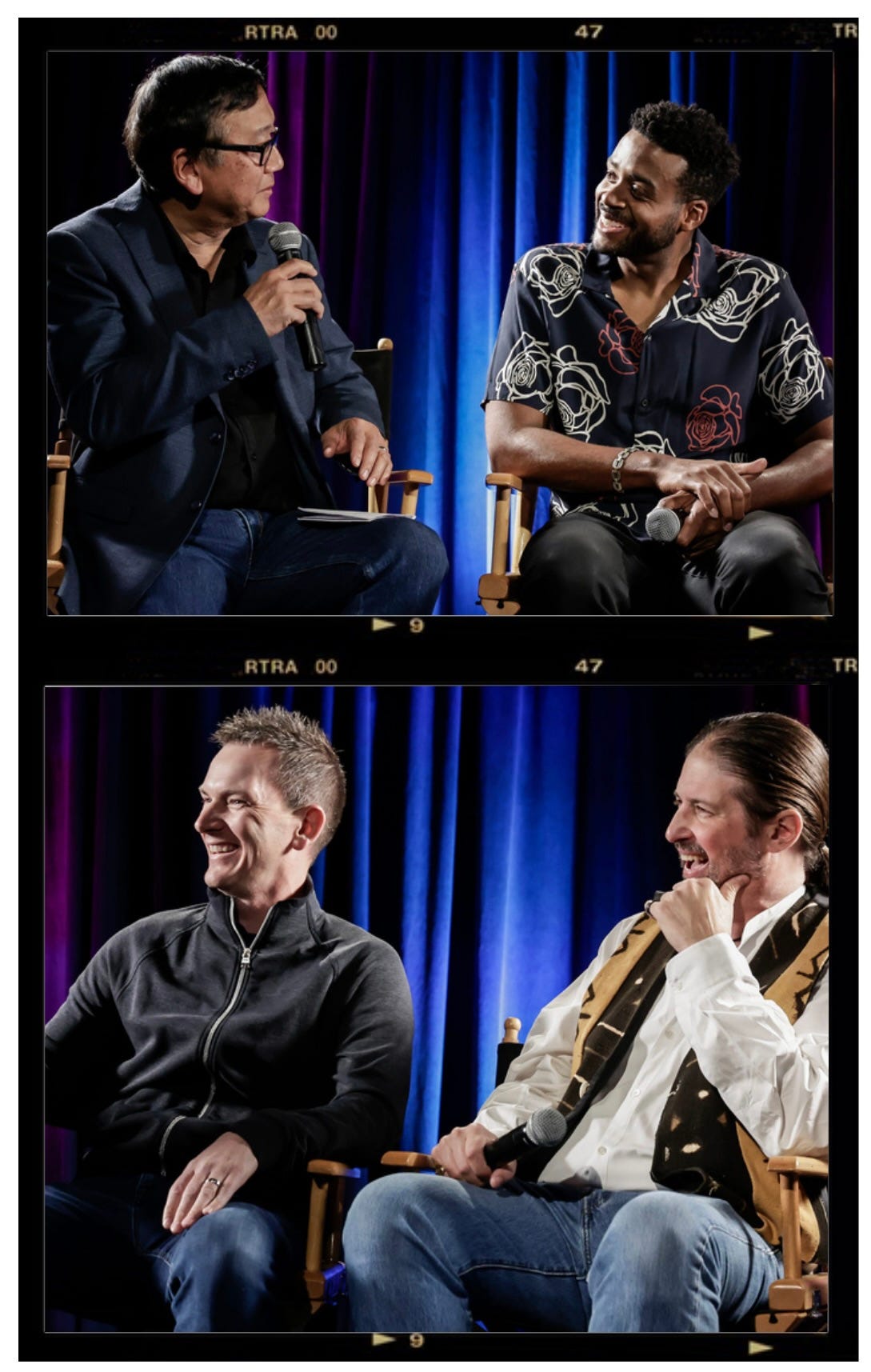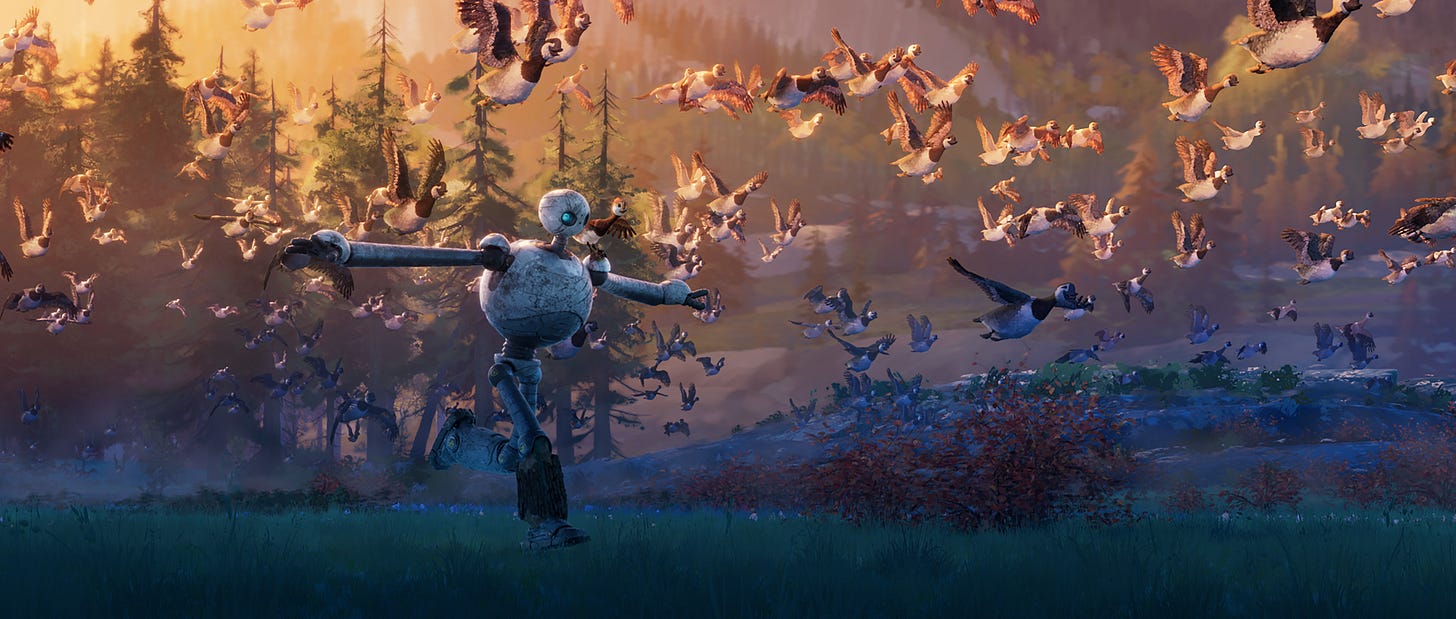🎧 'The Wild Robot': Sorrow, Heart & Flights of Imagination
Michael Goi, ASC, unpacks the creation of the blockbuster's emotional wallops with composer Kris Bowers, VFX supervisor Jeff Budsberg and supervising sound editor Leff Lefferts

Welcome to the latest episode of Art & Crafts, The Ankler’s podcast series dedicated to bringing audiences behind the scenes to examine the careers and contributions of the talented artisans who create and craft the movies and TV series that we love. Subscribe on Apple Podcasts.
The evolution of Roz, the advanced learning machine at the center of The Wild Robot, unfolds through a bittersweet journey of love and loss. Stranded on a remote island after a shipwreck, Roz (voiced by Lupita Nyong’o) finds her orientation by focusing on a task: raising the weak gosling whose family she has inadvertently killed. In training Brightbill (Kit Connor) to fly so that he can join his fellow geese on their yearly migration, she succeeds — but also ensures her separation from the creature she has transcended her programming to love.
This soaring emotional scene was the focus of a panel moderated by Michael Goi, ASC, with three of the key creators behind the global hit, which has grossed more than $300 million, from DreamWorks Animation and Universal Pictures: Composer Kris Bowers, visual effects supervisor Jeff Budsberg, and supervising sound editor Leff Lefferts. Their conversation was recorded Nov. 12 during The Ankler’s Art & Crafts Live event at the American Society of Cinematographers Clubhouse.

For all three craftsmen, Roz’s emerging humanity was conveyed through painstaking cycles of building and deconstruction. Budsberg and director Chris Sanders shared a goal of bringing the “endearing hand-craftedness of animation” to the character, the VFX pro said. “Incrementally, if you’re paying attention, what I’m doing is deconstructing her appearance” as she becomes more human, he explained. “Smearing the highlight across these rings on her arm, brushing the normal light response on her body — and sequence by sequence, we’re making her more and more painterly, embracing the world around her.”
Likewise, Lefferts’ role as sound editor is as much about what you don’t hear as what you do, he says. For example, the simple whoosh of the wind as Roz watches Brightbill fly away says more than her voice could in that moment. For Bowers, scoring that crucial scene took multiple tries that ultimately led to a unique opportunity. “My first version was kind of a fail — honestly, primarily because I wasn’t capturing the complexity of this relationship and the emotion,” he said. “And so when I wrote the second version, Chris was so excited that he actually encouraged me to write away from picture, and said that they would kind of work the sequence to the music.”
It was huge compliment from director to composer, Bowers felt, adding, “That’s something that’s really rare.”
Transcript here.


